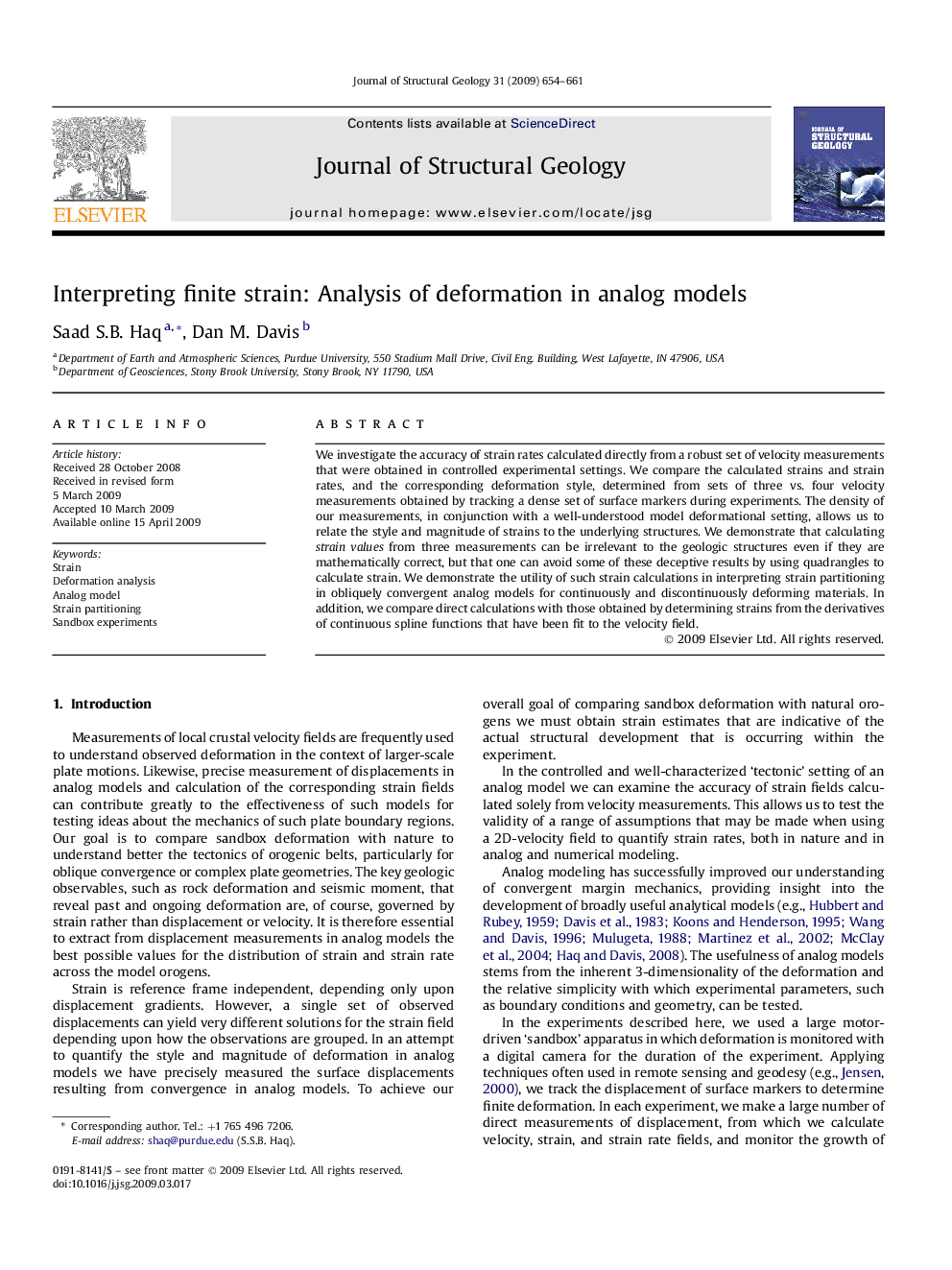| Article ID | Journal | Published Year | Pages | File Type |
|---|---|---|---|---|
| 4734253 | Journal of Structural Geology | 2009 | 8 Pages |
We investigate the accuracy of strain rates calculated directly from a robust set of velocity measurements that were obtained in controlled experimental settings. We compare the calculated strains and strain rates, and the corresponding deformation style, determined from sets of three vs. four velocity measurements obtained by tracking a dense set of surface markers during experiments. The density of our measurements, in conjunction with a well-understood model deformational setting, allows us to relate the style and magnitude of strains to the underlying structures. We demonstrate that calculating strain values from three measurements can be irrelevant to the geologic structures even if they are mathematically correct, but that one can avoid some of these deceptive results by using quadrangles to calculate strain. We demonstrate the utility of such strain calculations in interpreting strain partitioning in obliquely convergent analog models for continuously and discontinuously deforming materials. In addition, we compare direct calculations with those obtained by determining strains from the derivatives of continuous spline functions that have been fit to the velocity field.
